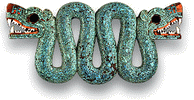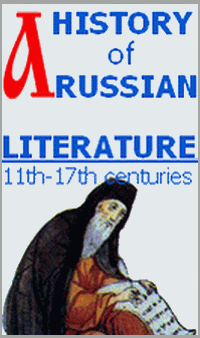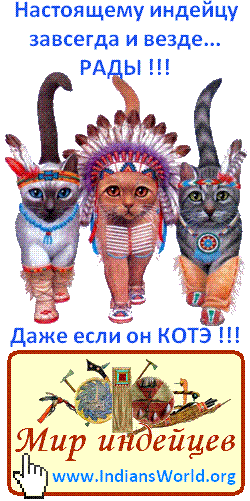General information on the history of the Maya. Classical period
Category: MayaClassical period lasts from 325 to 925 AD. It is divided into Early Classic (325-625 AD.) – when was stopped the outside influence and appeared own features, such as Cone arch in the architecture and registration of historical dates using hieroglyphs; period of the heyday (625-800 AD.), when was reached its maximum brightness in mathematics, astronomy, ceramics, sculpture and architecture, and the period of crisis (800-925 AD.) – the time when the culture went into decline and ceremonial centers were abandoned.
Classical Age – the time the true heyday of the Maya, in Guatemala, the mountain, as in Petén, and the north of Yucatan. There is the classical culture of the Maya hieroglyphic writing developed, erected cyclopean limestone buildings. There is a flourishing of sciences – astronomy, mathematics and medicine. In the Classic period Maya there own elements in the architecture, such as, for example, the false arch, terraces, stucco decorations, crests on the ridge, which, mixing, led to the fact that the architecture is called the style of Peten. It is characterized by structures on the foundation of stepped terraces, thick walls, stairs outside the front of the building, the high ridges above the rear wall and the stucco decoration in the form of grotesque masks. In Guatemala, replace one another powerful dynasty of native Mayan rulers – at the beginning of the late period of classical era is the rise of Tikal. During the period of greatest prosperity of the city, in 7-8 cc., erected its main architectural ensembles, such as: the main square, the north acropolis, a temple platform 1 – 5. By the 8th century the population of Tikal was estimated from 10000 to 11000 people. In Tikal and other religious centers of the Mayan cities lived rulers and representatives of the priesthood. Ordinary people did not live in the “city”. In vicinity Maya “cities” had 50 – 100 villages (data of M. Coe). Another great city of the Maya – Copan, now the territory of Honduras, is notable for his sculptures, made of tuff. The set of images of deities of maize, the hieroglyphic stele with the dates of their buildings, altars … Not far from Copan, Guatemala, is located the east “city” Quirigua. This site is no less remarkable than Copan and pretty with its architectural style (similar). The most majestic monument of Quirigua is undoubtedly the Stele “E”, reaching an impressive height and covered with fine reliefs having Baroque redundancy. Apparently Quirigua was the principal city of the region, and Copan was its protectorate. Copan is a unique city. Stephens called it “the valley of wonder and romance.” In Copan territory lived about 200 000 people (around the site). Between 756 and 771 AD there were built three temples up to 30 meters each. Of the attractions of “city” – the Temple of Venus, its “hieroglyphic stairway” covered by 2 000 characters (this is the longest of the texts of the Maya) and the largest in the southern Maya area ball court.
The ritual ball game was important in the religion of the Maya. Virtually every major Mayan settlement had one or more similar court. It is usually a small rectangular box on the sides of which are pyramid-shaped platform on which the priests watched the departure of the ritual. Meanwhile, it was a cult game. In the Popol Vuh, “priceless vault of Mayan myths ball game is referred to as the game of the gods: it was used for competition between the deity of the death Bolon Tiku (or as they are called in the text the Lord of Xibalba, the underworld that is), and two brothers – Hunahpú and Xbalanque. Thus, players initiated one of the episodes of the struggle between good and evil, light and dark, masculine and feminine, the serpent and the jaguar. Large playgrounds for ball games are in Copan, Kaminaljuyu, Zaculeu, Uxmal, Chichen Itza. In the classical era that ritual was distributed throughout the Maya, but in Landas relacion there is no mention about this game, and, apparently, by the time of arrival of the Spaniards it was not practiced. As for Mayan states of the classical era we have fairly scarce information. We have very detailed information about the names of rulers, some dates, but we know little about the internal politics of these States and know little about the contours of their borders.
End of the Classical period.
But the true greatness Maya “city” reached in 8-9 centuries. Tikal defeated Calakmul, and begins to rule over the Peten. At the same time in the Usumacinta river basin thrive Palenque, Bonampak, Yaxchilan, Piedras Negras. In these places, the art of the Maya reached the zenith. At Bonampak murals are gorgeous, which tell of the victory of a local ruler over the Yaxchilan army. Of these murals, we can gather a lot of information about the political system of the Maya, how they fought, as they bring sacrifices to their gods, how they celebrated. In the first mural we see a battle between soldiers of Bonampak and Yaxchilan. Apparently, this was one of the greatest battles of the time. Then we see a scene of captives sacrifice; on the pyramidal platform is the ruler of Bonampak, overseeing the execution of noble captives. And at the last fresco in this series depicts the celebration of a certain religious holiday. These frescoes were a sensation in the scientific world when they were found in 1946, the first explorer of the murals was a photographer J. Healy. Apparently murals were created in the mid-9th AD. For a thousand years they have not lost the brightness of colors.


